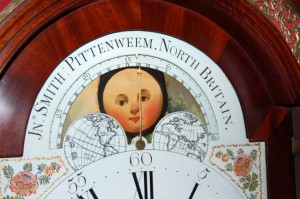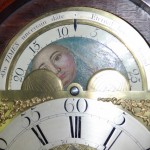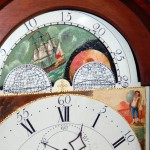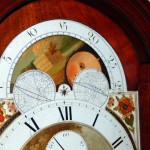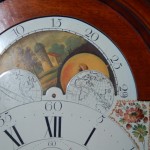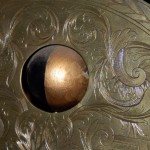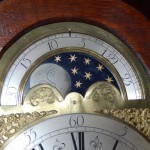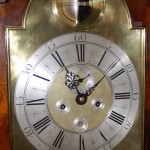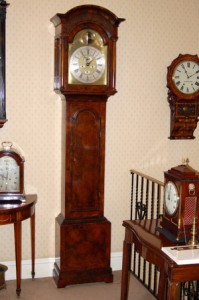In this blog I wish to talk about the process of sympathetic restoration of a C.1770 antique bracket clock. I will show you the time consuming process that is generally carried out on most 18th century antique clocks at some part in their life.
Sympathetic Restoration Antiques
Sympathetic restoration done professionally is essential. It can literally transform a clock into a wonderful piece of art and bring it back to life. Restoration done poorly or done by an unqualified person can literally destroy the value of a clock.
Difference between Restoration Done Properly and Done Poorly
I also hope you can understand the difference in price of buying an unrestored antique clock from an auction and a carefully sympathetically restored guaranteed example from a respected antique clock dealer. Restoring an antique clock from what we call a ‘sleepy’ state to ‘showroom’ condition takes time. In today’s world labour costs are expensive and as a result can be costly.
How long does it take Restoration Done Properly ?
Restoration taking some 10/15 working days on a cabinet and 5 working days on any antique clock movement are very typical. 20 working days, nearly a month of a highly skilled persons wages, costs alot of money. Some clocks may not need as much work, maybe this will have been carried out at some time in the past, but how well has this been done?
Over Restored Items
On the antiques market there are lots of over restored items. I have seen examples that just make you want to shake your head, sticky french polish and open grain wood.
Antiques Sometimes Ruined
These are not beautiful antiques anymore. Our cabinet restorers have worked with us from school, they have about 20 years experience and have proper in house training. The antique clocks director of a major auction house once stated, ” no one in his opinion restores their antiques as sympathetically.” The restoration process is a slow labour intensive process, it can not be rushed and corners must not be cut. Clocks or antique furniture do not leave our workshop until the owner himself is happy.
Some Examples of Restoration
Below are a series of pictures detailing the transformation of a bracket clock from a tired somewhat distressed state, into a beautiful loving cared for example. This clock will now give many years joy to its new owners. Finding clock is such a ‘sleepy’ state is far better I it means they have not be ‘butchered’ by over enthusiastic workmen in the past.
Lots of Intricate Repairs
As you can see in the above pictures where mouldings or pieces are loose these need to be removed and adjusted/repaired and then refitted with animal glues. Animal glues are what 18th century cabinet makers used. They have a superb property that when heated they become unstuck and so repairs to veneers or mouldings can be carried out. If modern pva wood glues were used to clock sections, repairs would have been more difficult.
As you can see all loose veneers on clock or damaged sections need to be removed and either replaced by wood of the same age and then carved to shape by hand or simply re-glued with animal glue.
Further pictures from a painstaking restoration to a beautiful C.1770 antique bracket clock. A clock might look immaculate as in the top picture prior to restoration but generally many weeks work are required to bring any clock into proper showroom condition.
All repairs can only be done when cabinet is structurally sound. Animal glue over many years can become brittle and mouldings can become loose or have been stuck on incorrectly over years.
Structural repairs to clock are now nearly complete. From now on, the clock will start looking like a clock again!
Repairs carried out, done properly with wood of the correct flame and age, are unnoticeable.
Antique bracket clock restoration perfectly carried out by an experienced cabinet restoration specialist.
The finished clock minus frets to door that need to be fitted. A transformation that is time consuming and can only be carried out be a fully qualified experienced cabinet restorer. For any futher information on antique clock restoration please contact me directly, I will be happy to help. Later in the year I will write on antique clock movement restoration. Please subscribe to my rss feed to received regular information. Pendulum of Mayfair can provide a full antique clock repair service, for more information visit www.pendulumofmayfair.co.uk.
Daniel R Clements




































